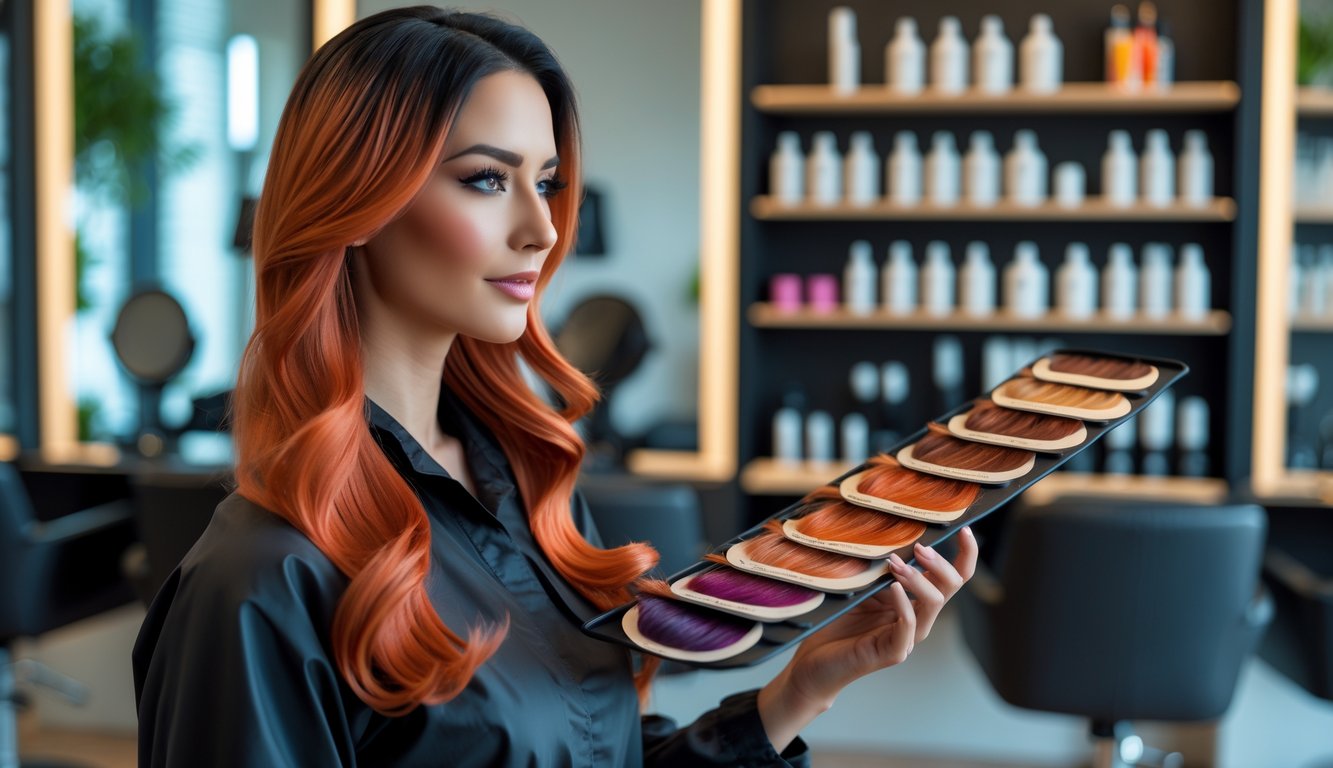New Hair Color Formulas Secretly Reducing Salon Visits for Professionals
Honestly, trying to convince clients to come in for a retouch when their roots are still hiding out? It’s like the color companies are messing with my schedule on purpose. Here’s the deal: these new salon hair color formulas? They just last. I mean, tone stays fresh, roots don’t scream for attention, and I’m over here watching Wella’s Color Xpress cover gray in 10 minutes like it’s some kind of hack. Clients bail on appointments and book spin class instead. Can’t say I blame them. Matrix has this vegan 20-minute cream color—by the third round, some of my regulars swear their hair grows slower. (Which… no. That’s not a thing. Is it?) Every shelf is crammed with “long-lasting shine” promises, demi-permanents, pigment tech—George Papanikolas keeps shouting about the “future of color,” and I’m just wondering if it’s always been this good five shampoos in or if I’m losing my mind.
Last week I caught two stylists in the break room griping—fewer bookings, shorter sessions, and don’t even mention those at-home gloss kits people are ordering between emails. In-salon glossing blends fading lines and boosts vibrancy so effortlessly now, how am I supposed to convince anyone they need a three-week touch-up? Golden blondes just keep glowing for weeks, and clients expect some “pro trick” for slowing regrowth, but honestly, it’s the formulas and tech, not my magic hands. Science is quietly sabotaging my calendar.
Not that I’m mad. Well, maybe a little. Fewer root emergencies, happier clients—sure, that’s technically good. Except for that one guy who thinks his color lasts because he showers less. (Why do I know this?) Imagine if every formula actually made color permanent. If these golden blonde trends for 2025 keep spreading, my chair’s going to be the waiting room for people who can’t commit.
The Evolution of Professional Hair Color Formulas

Every time I walk past the color wall or squint at the ingredient lists, it’s like—yeah, these formulas aren’t even pretending to be the same stuff from the 2000s. Tech runs the show now: pigment science, micro-dosing, all this data killing off the “one dye fits all” era. Stylists are stubborn, sure, but if something actually works and makes life easier, we’re all in. Even if we pretend we’re not.
Breakthroughs in Hair Coloring Technology
There was this one guy—total ammonia snob—swore nothing else could lift. Then he got his hands on nanopigments and suddenly, brassiness was yesterday’s problem. The evolution in pro hair color technology isn’t cute or gentle. It’s labs, not just foils and gloves.
Salons scramble to keep up with high-def pigments and bond-builders. Blust-ON’s pigment tweaks? Turns “maybe it holds” into “yeah, we measured that.” I watched a chemist laugh at drugstore dye for ignoring cuticle porosity (“No one’s hair is uniform, come on!”). I even tried a “blue light defense” formula out of pure skepticism—surprise, my endless scrolling didn’t trash my color as fast.
From Traditional to Modern Salon Options
It’s not just “pick a box and pray” anymore. There’s a canyon between old-school developer-plus-dye and, say, IGK’s Permanent Color Kit, which stylists use at home now without panic. HSA’s 2026 color line? Not just guessing—sustainable, customizable, and finally lets us mix actual bespoke shades instead of hunting for unicorn tubes.
Does that mean layering reds over browns to hide roots is dead? Nope. But it’s hilarious how many people still think pre-mixed ratios are “good enough” while hair color trends now scream about less breakage and more vibrancy. My friends still argue demi vs. permanent like it’s a VHS vs. streaming fight. (It’s not.)
Impact on the Hair Industry
This shift? It’s not gentle. Salon owners are stuck: invest in the new stuff or get crushed by DIY kits that actually work now. Alfaparf Milano’s Evolution of the Color? They claim—after 15 days—better color under blue light. I didn’t believe it, but I saw the swatch. I used to think fade was just what happened, like socks disappearing in the wash.
Here’s the weird part: when stylists finally get reliable results, clients come back less. Fewer “help, my roots!” texts. The tech is making salon results stubborn. Try to convince stylists to use the cheap stuff and they’ll just show you a dozen horror stories. And why does every new formula mean three new certifications? I’m tired. But I’ll admit, coloring hair has never felt less like roulette.
How New Formulas Are Reducing Salon Visits
Just when I think my calendar’s about to explode, it actually chills out—new hair color formulas are stretching out the time between appointments. Longer retouch gaps, fewer frantic reminders, clients messaging me “still looks good?” weeks late.
Long-Lasting Effects and Color Retention
Ever tried to make a coffee last three hours? Same energy. These new color formulas? They stretch salon visits out way past what I’d expect. L’Oréal’s fade-resistance claims always sounded like marketing, but swatch tests don’t lie: less than 15% fade at six weeks, even outside the salon’s perfect lighting.
Pigments hang on like they’ve got something to prove. Clients who used to panic after two washes now barely notice demarcation, even after pool days. (Chlorine, why are you like this?) Some brands stuff in antioxidants and bond-builders that sound like nonsense, but the science checks out: mild pH, even pigment, protected cuticle. Net effect? More empty chairs, fewer “it’s already faded!” complaints.
Fewer Touch-Ups for Gray Coverage
Gray hairs are relentless. Always have been. But now, pre-blended gray coverage formulas hang in there for ages—almost miraculous. Vogue Business talks up Hairprint’s botanical formula, claiming actual re-pigmentation, not just hiding the gray.
Clients who used to book every four weeks now push it to six, sometimes eight. Low-ammonia, micro-pigment blends mean regrowth sneaks up instead of screaming at you. The harsh root line? Basically gone. Color charts can’t keep up with all the undertones in these new blends. It’s like the molecules are smarter than my calendar.
Enhancing At-Home Maintenance
Nobody told me I’d end up tech-supporting clients at midnight, but here we are. The new formulas? They’re built for easier DIY. Digital dispensers and AI formula trackers—Vish, Phorest—let salons store your exact shade, so “I forgot what you mixed” is dead.
Clients get toner sprays, post-color masks, QR-coded video walk-throughs for root blending. They swipe on a gloss at home instead of panicking and booking a full appointment. Every “after” selfie I get tagged in? It’s half their own work, not just my brush. The color management software is wild, but honestly, people mess up less when they feel in control—and mostly just text me “thanks!” instead of “help!”



